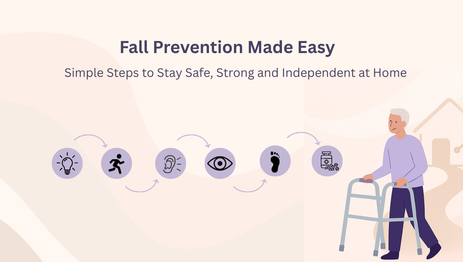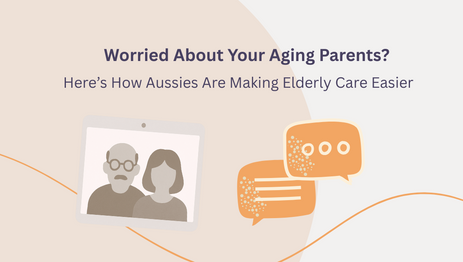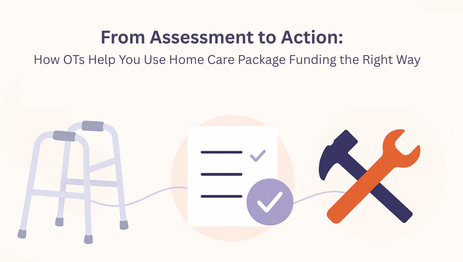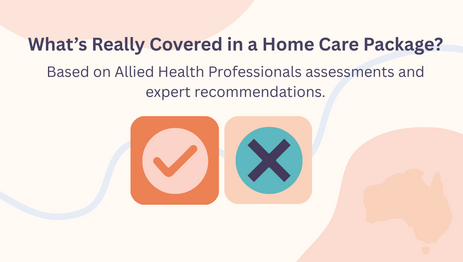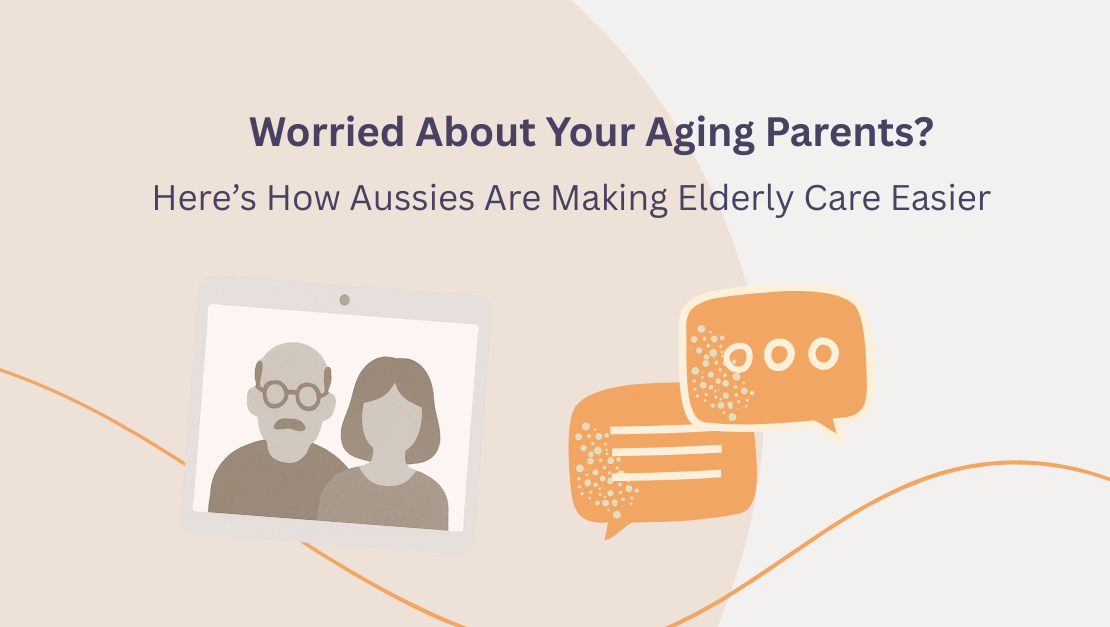
Help your parent age safely at home—without doing it all alone
Are You Worried About Your Aging Parent?
If you're wondering:
-
“Is Mum safe at home alone?”
-
“Does Dad seem more forgetful lately?”
-
“How can we keep them at home without putting them at risk?”
You’re not alone. Thousands of Australian families are quietly managing the emotional and practical load of caring for elderly parents at home.
This guide will walk you through:
-
How to spot the early signs your loved one may need help
-
What home care support is available across Australia
-
Ways to make the home safer and more accessible
-
How to keep your parent socially connected and mentally well
-
Where to find financial support and aged care funding
By the end, you’ll have clarity, options, and real steps you can take today.
5 Signs Your Parent May Need Extra Support
Aging is different for everyone, but these signs often mean it’s time to get help:
-
Unintentional weight loss – May indicate issues with cooking, shopping, or eating.
-
Falls or near-misses – Even a small trip can lead to serious injury.
-
Messy home or unopened mail – Possible cognitive or mobility issues.
-
Increased forgetfulness – Missed appointments, repeated stories, or misplaced items.
-
Sadness or isolation – Withdrawal from social life is a common warning sign.
For more information, read Healthdirect’s guide to caring for older people.
What Is In-Home Aged Care?
Aged care doesn’t always mean moving to a facility. Many families now use government-funded in-home care to support older adults in the comfort of their homes.
Through My Aged Care, your parent may be eligible for services like:
-
Help with bathing, dressing, and toileting
-
Medication reminders
-
Physiotherapy, nursing, and occupational therapy
-
Companionship and transport to appointments
You can start with an assessment and get matched with the right level of support.
Helping Them Eat Well
If your parent is skipping meals, struggling to cook, or relying on toast for dinner, consider:
-
Meal delivery programs like Meals on Wheels Australia
-
Support workers who assist with meal prep and grocery shopping
-
Nutritional support from a home-visiting dietitian (may be funded under a care plan)
Make the Home Safer and Easier to Navigate
Falls are one of the biggest risks for seniors—but many are preventable with simple changes:
-
Add non-slip mats in the bathroom
-
Install grab rails near showers and toilets
-
Improve lighting in hallways and stairwells
-
Remove trip hazards like loose rugs and cords
-
Consider a home safety assessment with an occupational therapist
More tips are available through on our Occupational Therapy Services page
Combating Loneliness and Isolation
Aging adults often lose touch with social groups, which can lead to:
-
Depression and anxiety
-
Increased risk of dementia
-
Decline in physical health
Here’s how to help:
-
Connect with local community centres or senior programs (COTA Australia)
-
Schedule regular social support visits through their care package
-
Explore mental health resources via Beyond Blue – Older Adults
What Support Is Available for Families?
You don’t have to shoulder the costs alone.
Your parent may be eligible for:
-
Home Care Packages (HCP) – Government-subsidised aged care services
-
Commonwealth Home Support Program (CHSP) – Entry-level support for daily tasks
-
Carer payments or allowances via Services Australia – Carers
-
Advice from aged care financial planners to help you budget and apply for subsidies
Explore available options on My Aged Care – Fees and Charges.
✅ 3 Steps to Get Started Today
You don’t have to do this alone. Here’s a simple path forward:
-
Book a care assessment at My Aged Care
-
Speak to a care partner to match you with trusted in-home providers
-
Create a custom care plan based on your parent’s specific needs
Need help? Call us directly at 1300 315 315—we’re here to guide you, step by step.
You’re Doing Better Than You Think
Supporting an aging parent is hard. It’s emotional. It’s personal. And it often feels like there’s no right answer.
But taking action—even reading this blog—is a powerful first step.
At Summit Health Solutions, we’ve helped hundreds of families just like yours find the support, clarity, and compassion they need. Whether you need Occupational Therapy, group Telehealth exercise, or in-home support, we’re here when you’re ready.
📞 Call now: 1300 315 315


